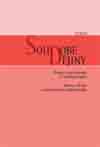„Turisté vystupují převážně jako uvědomělí občané našeho státu“ Východní Němci v Krkonoších v letech 1945–1970
‘Tourists Mainly Appear as Politically Conscious Citizens of Our State’: East Germans in the Giant Mountains, 1945–70
Author(s): Mateusz J. HartwichSubject(s): History
Published by: AV ČR - Akademie věd České republiky - Ústav pro soudobé dějiny
Summary/Abstract: This article charts out the emergence and development of tourism between the Polish People’s Republic and the German Democratic Republic in the area of the Giant Mountains (Karkonosze/Riesengebirge/Krkonoše), taking into consideration the conditions on the Czechoslovak side. For this area, which had been settled by Germans and was traditionally a popular tourist destination, the end of the Second World War was an historic turning-point. The subsequent expulsion of the Germans thoroughly changed the ethnic composition of the population and Poland set out on the path to become a Communist state. This area was closed to foreign visitors practically until the mid-1950s. That changed in 1956, when, in connection with partial political liberalization in the country and anticipated financial profit, the Giant Mountains area was made accessible (as were, later, the Sudeten Mountains) and state support was provided for tourism from both the East bloc (particularly Czechoslovakia) and the West, including the German Federal Republic. Poland signed an agreement with West Germany on the reuniting of separated families, since some West German citizens came from areas now in Poland and longed to visit their old home. Though East German leaders were at first displeased by this, they nonetheless began to allow their citizens to visit the erstwhile German areas further east. Whereas the authorities’ fears of the political repercussions of West German tourism predominated in Poland in the late 1950s, considerably restricting travel for them, collaboration in tourism with East Germany continued to develop in the 1960s, including the establishment of a joint tourist region in the Giant Mountains (though that was not as intense as between Czechoslovakia and East Germany or as between Poland and Czechoslovakia). Using Polish and East German archive records, the author nonetheless shows the political and organizational problems that arose from this. He discusses in greater detail an isolated incident from the early 1960s, when a group of East German tourists in the Giant Mountains of Poland outraged the local inhabitants with Nazi behaviour and caused alarm at the border by climbing Śnieżka Mountain without permission. This was then dealt with at the highest political level. There were organizational difficulties mainly in the insufficient capacity of Polish accommodations for tourists and the poor quality of services, which the East German tourists were critical of, particularly when they compared what was available in the Czech Giant Mountains. The presence of East German tourists in Poland did not help to create an image of the ‘good German’.
Journal: Soudobé Dějiny
- Issue Year: XVII/2010
- Issue No: 03
- Page Range: 349-368
- Page Count: 20
- Language: Czech

